Meteorite Identification
Please note, this website is informational only. The Campbell Geology Museum does NOT offer meteorite identification services.
Important Terms
Meteorites are “fragments of rock or iron from a meteoroid, asteroid, or possibly a comet that pass through a planet or moon's atmosphere and survive the impact on the surface” (1).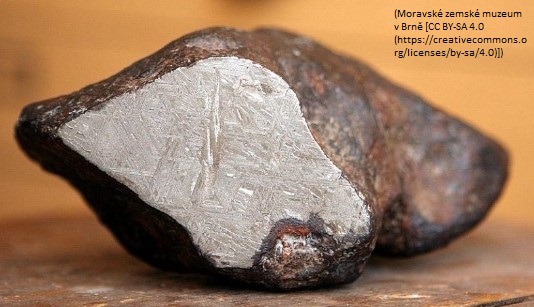
Meteoroids are what meteorites are called while still in space (5).
Meteors are “the streaks of light we see at night as small meteoroids burns up passing through our atmosphere” (1)
Shooting stars are “small pieces of rock or dust that hit Earth's atmosphere from space” (2). They include meteors and fireballs (1).
How Rare Are Meteorites?
Meteorites are incredibly rare. Most meteors (90-95%) don’t survive the trip through the atmosphere, and those that do often fall unnoticed in remote areas or into oceans. Some would even say they are more rare than diamonds. (3, 4)
Question and Answer:
Are meteorites magnetic? Yes. A majority of meteorites contain a significant amount of iron. If it isn’t magnetic, it probably isn’t a meteorite. (6, 7)
Are meteorites heavy? Typically, yes. The same thing that causes meteorites to be magnetic often causes them to be heavy: their high iron content. This iron causes them to be more dense than earth rocks of the same size. (6)
Are meteorites radioactive? Mostly no. Meteorites do contain small amounts of radioactive particles that are quickly lost, but they last such a short amount of time and are in such trace amounts that they are not dangerous. (5, 6)
Are meteorites on fire when they crash into earth? No. While meteoroids are still in space, they are cold. The amount of time they spend shooting through the atmosphere is too brief to warm the rock completely, and so when they land, they are not hot enough to set anything on fire because of the rock’s temperature. (5)
Origins of Meteorites
Not all meteorites are the same age. The oldest we have recorded clock in at 4.56 billion years old, especially those that come from asteroids. Meteorites from the moon tend to range from 2.9-4.5 billion years old, while those from Mars vary from 200 million to 4.5 billion years old. (8)
Types of Meteorites
Stony meteorites are the most common type of meteorites. There are three subtypes of this group: chondrites, achondrites, and a third, more rare group, planetary achondrites. Chondrites are made of chondrules, which are “droplets of melted rock which cooled in microgravity into tiny spheres” (1). These are the most common type of stony meteorites and the most common type of meteorites on earth in general. Achondrites lack chondrules and “form on planetary bodies with a distinct core and crust” (8). They are less common than chondrites. Planetary achondrites are simply achondrites that come from the moon or Mars. (8, 1)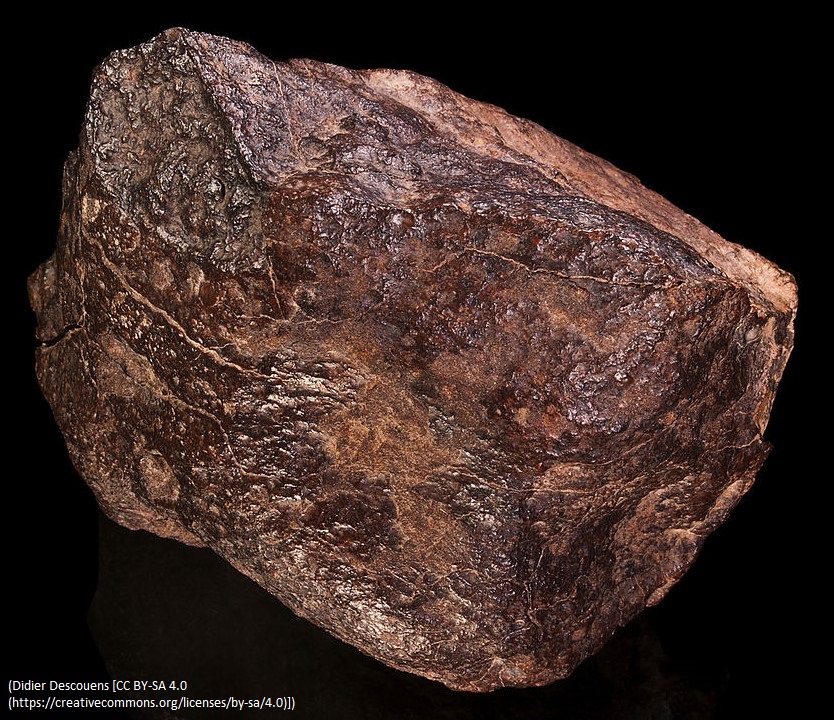
Stony-iron meteorites are the rarest of the three types of meteorites and contain an equal mixture of silicates and a nickel-iron alloy. There are two subgroups: Pallasites and Mesosiderites. Pallasites are “believed to form between the outer shell and core of an asteroid” (8), and the primary silicate mineral found in them is olivine. Mesosiderites have a silicate portion made of mainly igneous rock fragments and are likely formed by collisions between asteroids that are rich in metal and rich in silicate. Very few meteorites of this type have been found. (8, 1)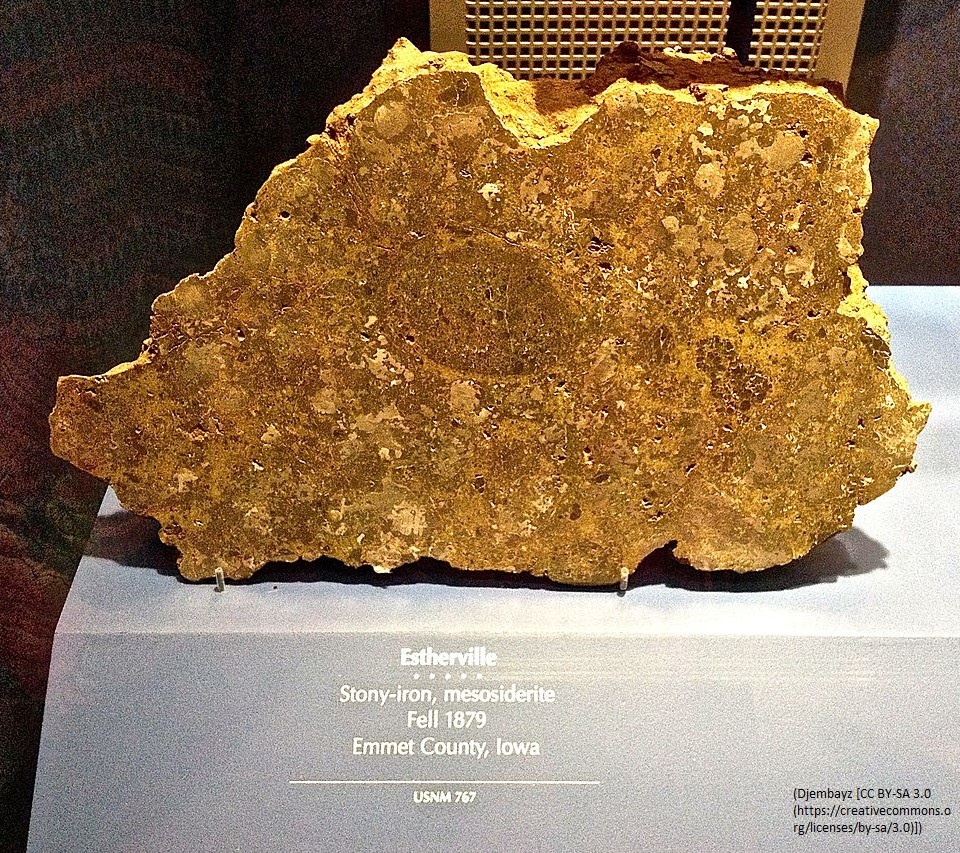
Iron meteorites are the most recognizable types of meteorites even though they aren’t the most common. They don’t have any subgroups, and they are made of mostly a nickel-iron alloy. (8)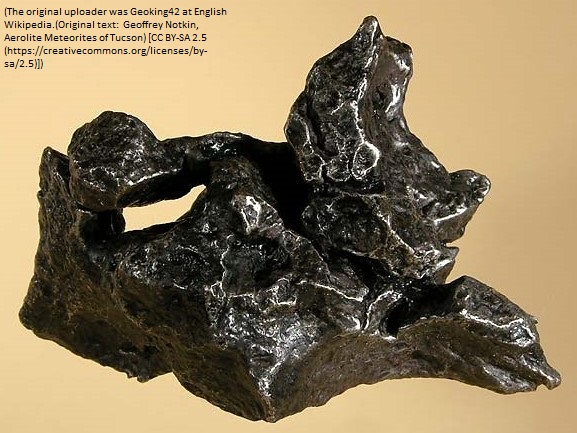
Meteorite Identification
Warning: The Campbell Geology Museum is not a Meteorite Identification Service.
Meteor-wrongs
Definition: A rock that is believed to be a meteorite but turns out to be an earth rock.
Common Giveaways that a Rock is a Meteor-wrong:
- If a rock contains quartz. The picture on the left is what people typically think of when they imagine quartz. However, the picture on the right also contains quartz.

- If a rock has vesicles (tiny holes created by gas escaping from cooling molten rock).
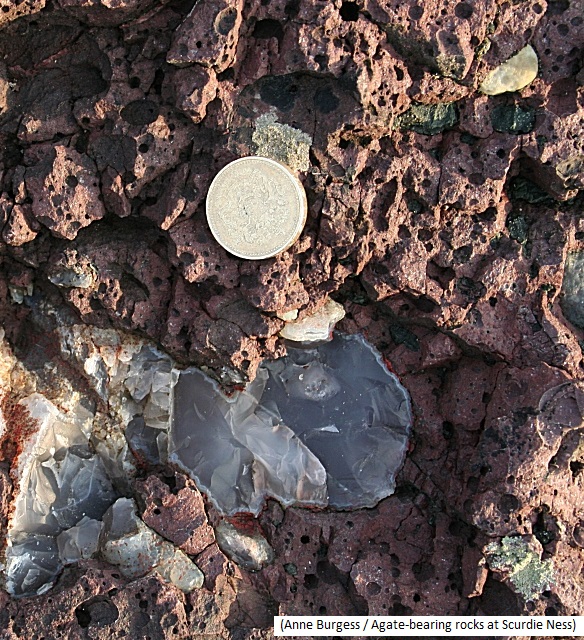
Commonly Found Meteor-wrongs:
Slag- Also called cinder or runoff. One of the most commonly found meteor-wrongs. Has vesicles, which meteorites don’t have. Often mistaken for a meteorite because of its melted look and is found everywhere.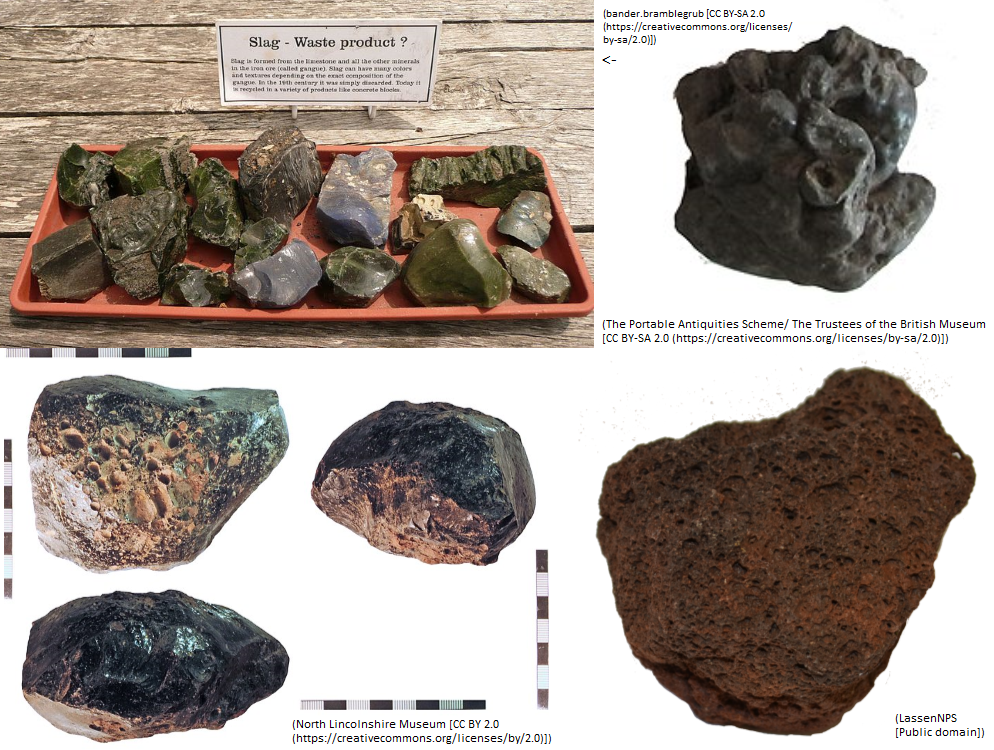
Magnetite and Hematite- Often mistaken for meteorites because they are magnetic. The first picture is magnetite, while the second group of pictures features different kinds of hematite.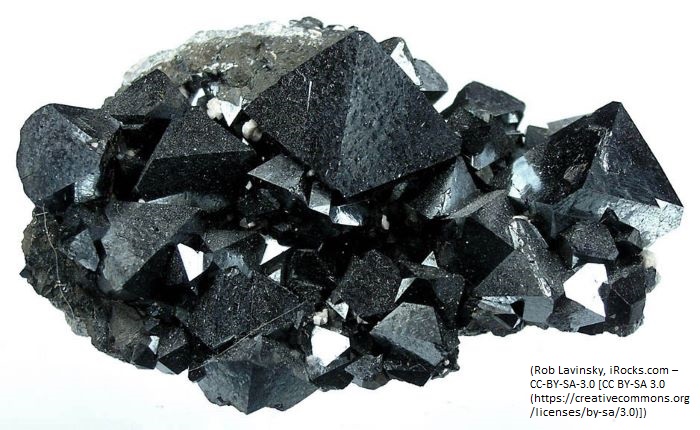

Dark black rocks- ex. Basalt.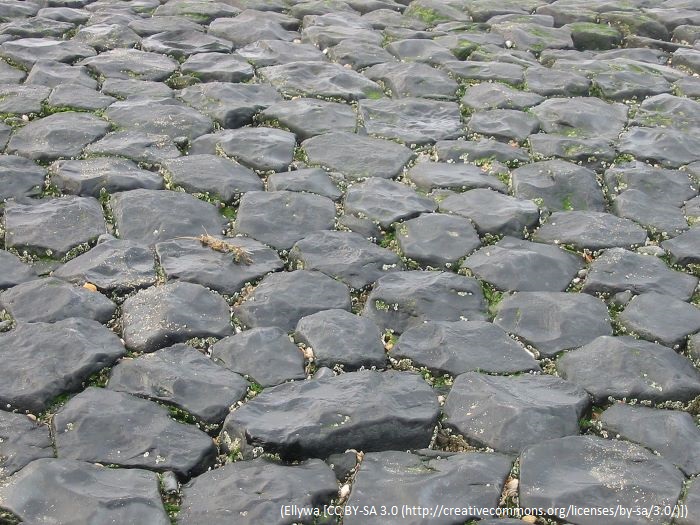
Tests:
Warning: Passing a test does not guarantee that a specimen is a meteorite.
Magnetism: A majority of meteorites are magnetic. If your specimen isn’t magnetic, it probably isn’t a meteorite.
Streak Test: Scratch your specimen on a ceramic tile. “Unless it is heavily weathered, a stony meteorite typically won’t leave a streak mark on the ceramic.” (7) If the streak is black or gray, your sample is likely magnetite. If it is a red or brown streak, you probably have hematite.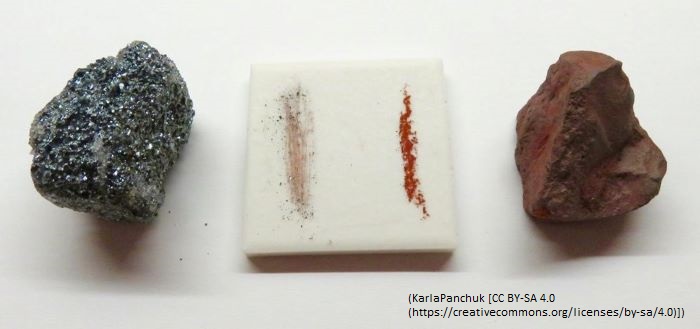
Nickel Test: Run a chemical test for nickel. If the proportion of nickel is inside the range for meteorites, you may have a meteorite.
Weight Test: Meteorites are much more dense than normal earth rocks.
Fusion Crust Test: Fusion crust is a thin, dark rind formed on a meteorite as it streaks through our atmosphere. It does not occur on earth rocks and will disappear over time due to weathering, but it can be seen on some fresh meteorites. The absence of a fusion crust does not mean a specimen is not a meteorite.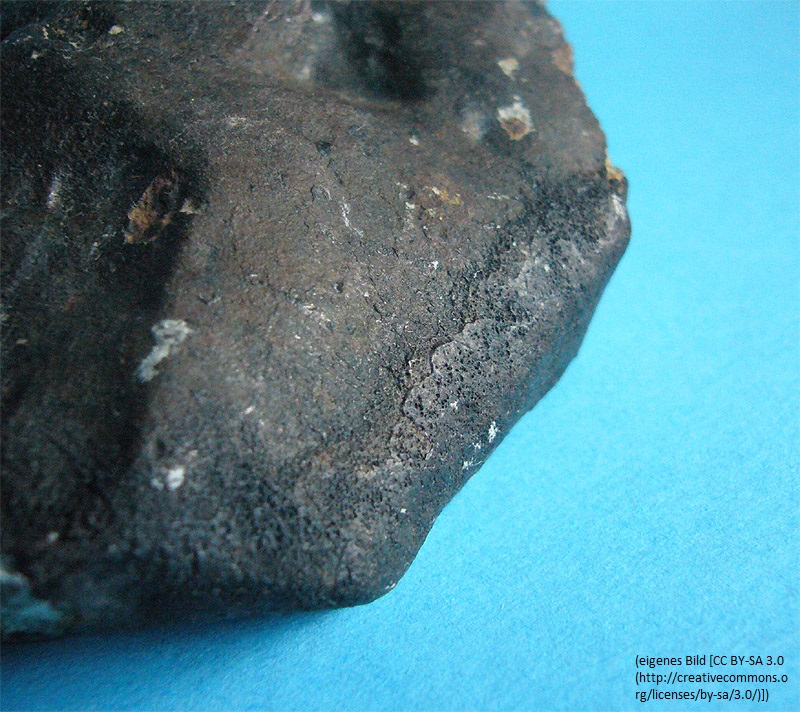
Regmaglypts Test: Regmaglypts, also known as thumbprints, are unique to meteorites. They are oval depressions found on many meteorites. The absence of regmaglypts does not mean a specimen is not a meteorite.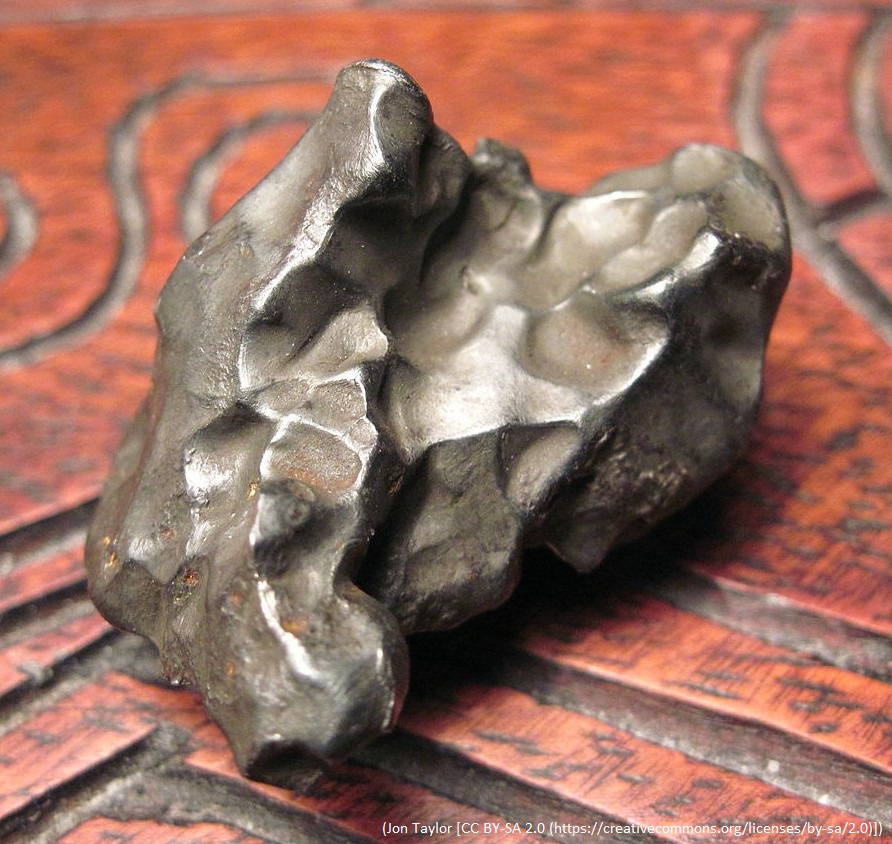
Window Test: One of the last tests to perform. Create a small window to see inside. If you can see shiny metal flakes, you may have a meteorite. If the inside does not have shiny metal flakes and instead is plain, you probably don’t have a meteorite.
Other Useful Sources:
-
https://www.meteorites-for-sale.com/meteorite-identification.html
-
http://coolcosmos.ipac.caltech.edu/ask/255-What-is-a-shooting-star-
-
https://geology.com/meteorites/meteorite-identification.shtml
-
https://www.space.com/33695-thousands-meteorites-litter-earth-unpredictable-collisions.html
-
https://www.meteorite.com/meteorite-information/meteorite-facts/
Sources:
-
(1) https://www.meteorites-for-sale.com/meteorite-identification.html
-
(2) http://coolcosmos.ipac.caltech.edu/ask/255-What-is-a-shooting-star-
-
(3) https://geology.com/meteorites/meteorite-identification.shtml
-
(4) https://www.space.com/33695-thousands-meteorites-litter-earth-unpredictable-collisions.html
-
(5) https://www.meteorite.com/meteorite-information/meteorite-facts/
-
(9) https://www.meteorite.com/meteorite-information/meteorite-identification/

